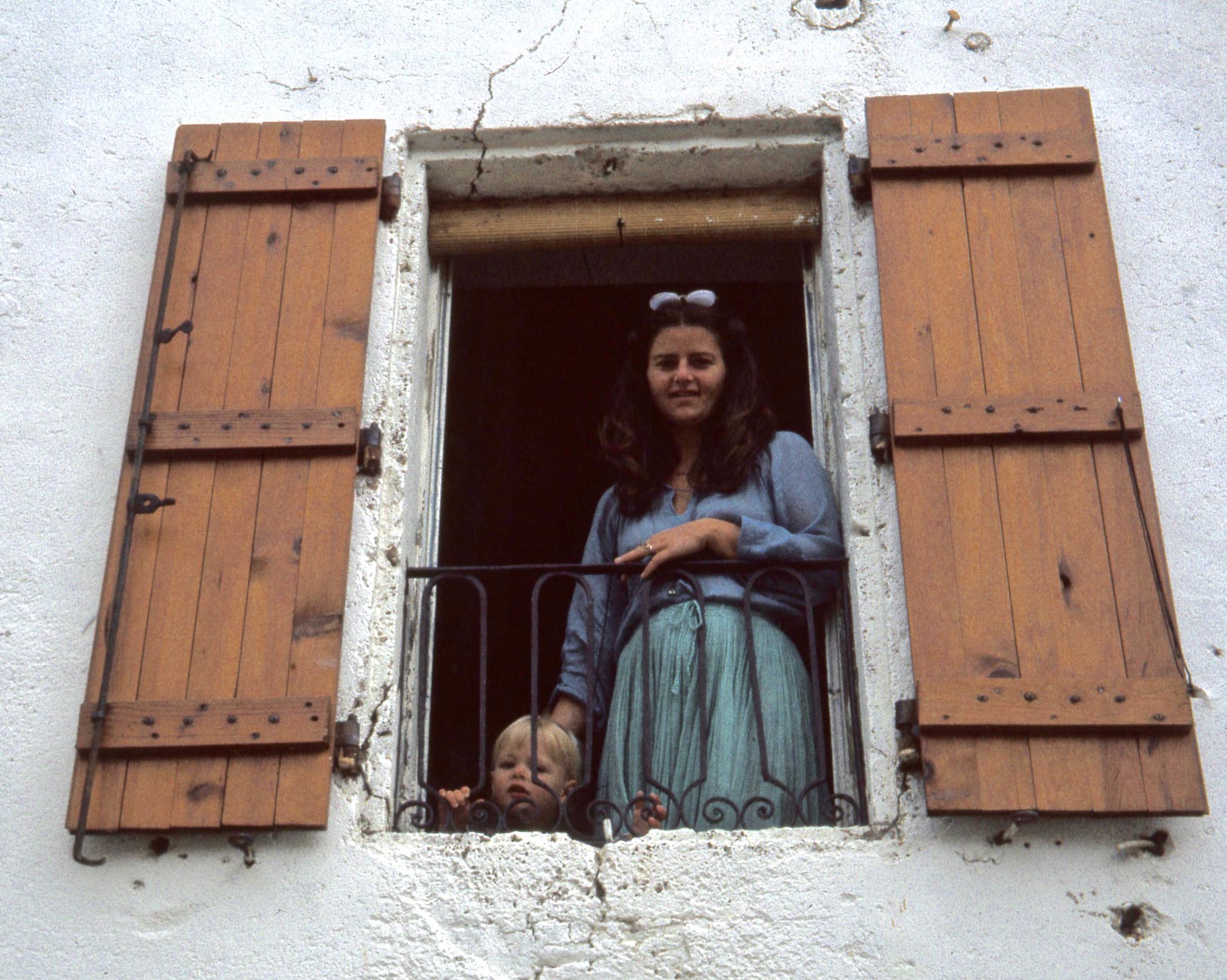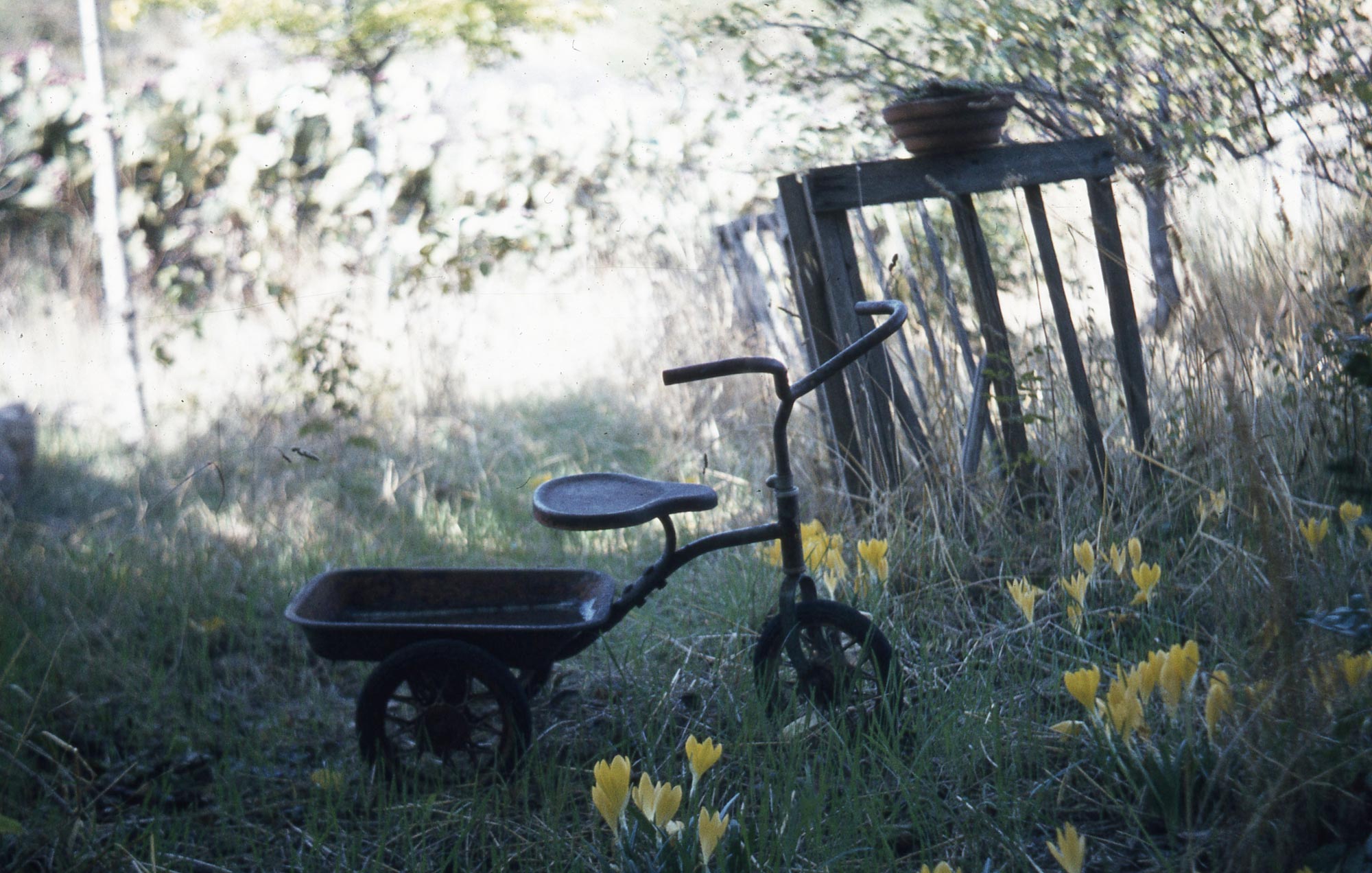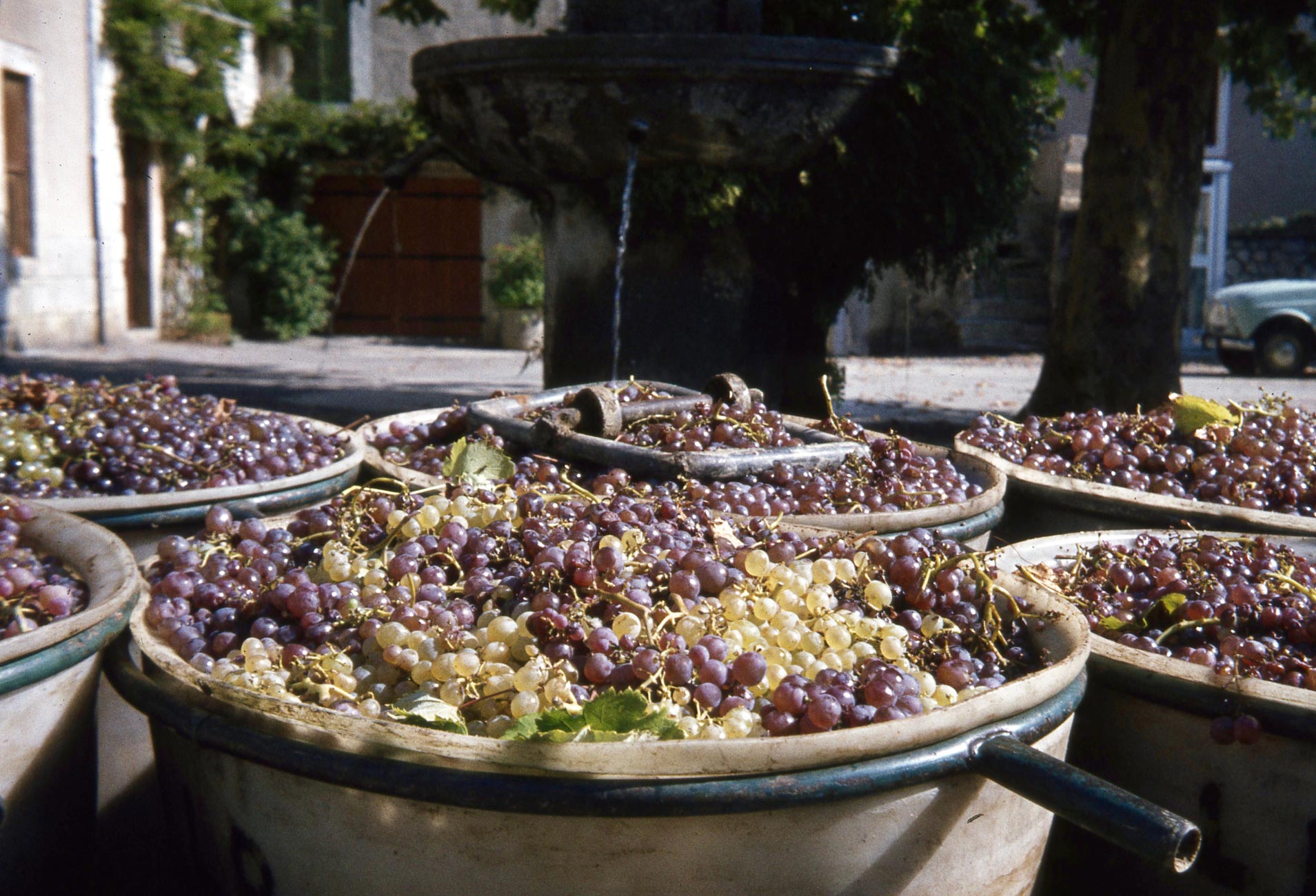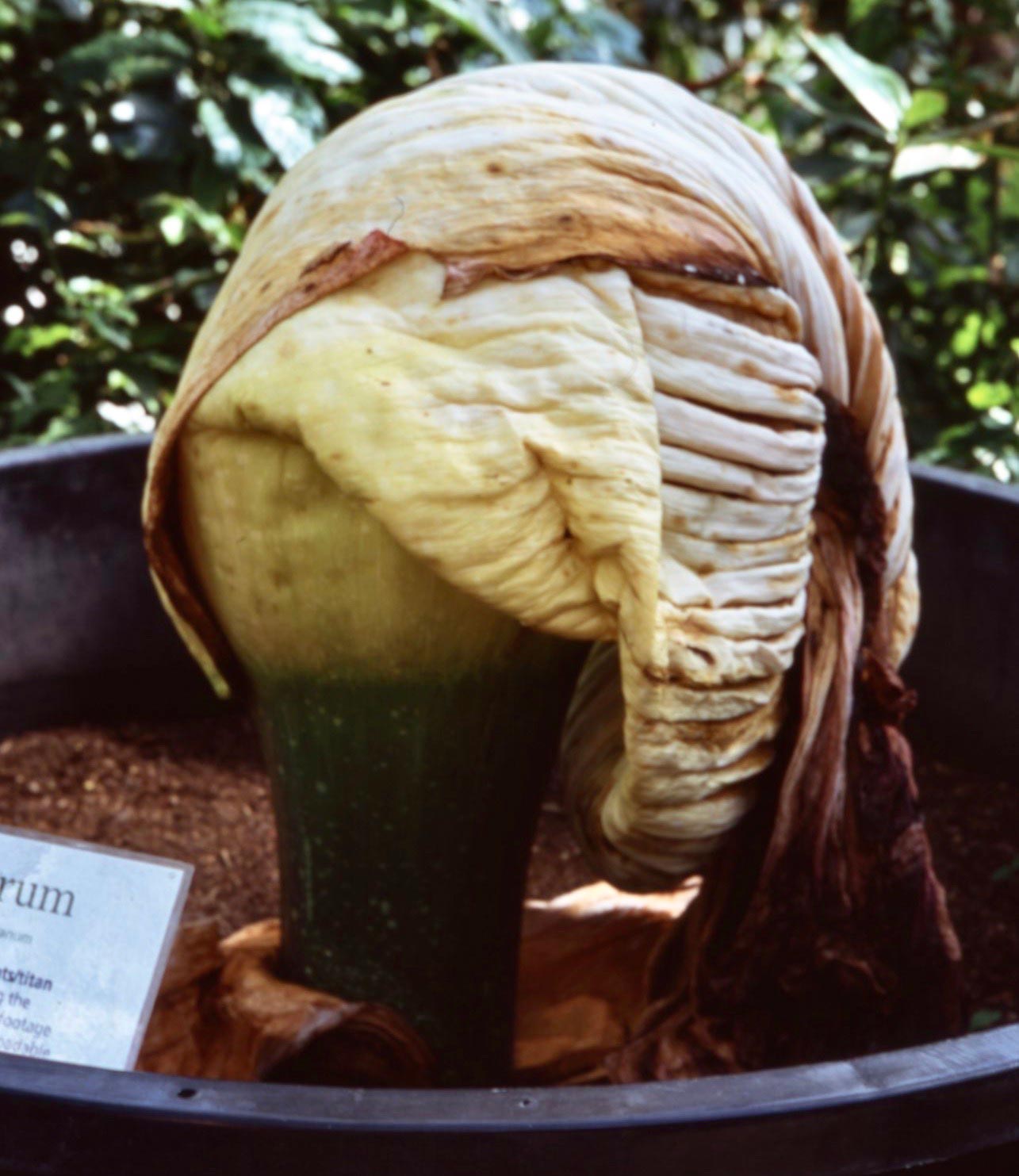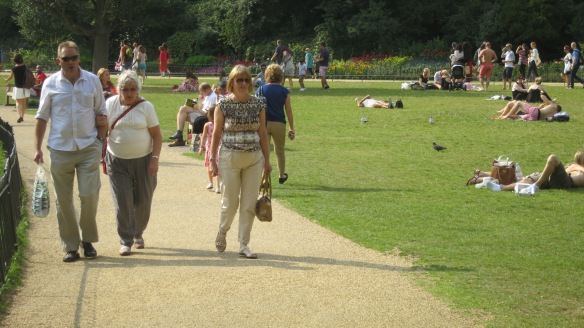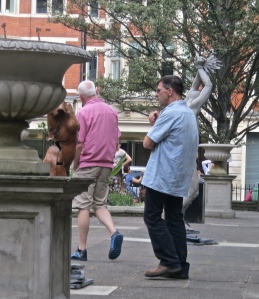During a French holiday in September and October 1981. We shared a house in Cabrieres, Languedoc with Jessica’s friend, Sue Sproston. The house belonged to a colleague of Sue’s who was in the process of renovating it, but hadn’t been too bothered about fixing potential leaks in the roof. Trust us to experience the worst thunderstorm locals could remember.
Here, Jessica and Sam see me off on a trip for the obligatory croissants from the boulangerie.
I found the local gardens fascinating. Some were carefully tended;
others seemed to be spaces to park trucks
or trikes.
Here Sue joins Jessica and Sam in investigating the local lake.
It was clearly the time of the vendanges, or the grape harvest.
We drove around the area and visited a number of villages, like the beautifully kept St Guilhem,
and the almost abandoned Villeneuvette, where Sam sloshed in the fountain, not as elaborate as the one in the grapes picture.
Wikipedia has this to say about Colbert’s social and economic experiment:
‘Villeneuvette is a commune in the Hérault department in the Languedoc-Roussillon region in southern France.
It lies close to the town of Clermont l’Hérault.
Villeneuvette is a small village made up of a group of buildings initially erected in the 17th century to create a royal clothmaking factory and provide accommodation for its workers. Apart from a hotel and restaurant, the buildings are now restricted to residential use, many for holiday purposes.
Creation of Villeneuvette was promoted in 1677 by Jean-Baptiste Colbert the noted finance minister of King Louis XIV. It was one of his many initiatives to develop France’s industrial base. Power for the factory was hydraulic with water supplied via different water courses from existing basins. The factory was privately owned and produced cloth for the king including uniforms for his armies. The factory was in existence until 1955.
Since 1995 the village has been classified as a “Zone de Protection du Patrimoine et du Paysage” recognising the originality and importance of its heritage.
The original inscription above the gateway was “MANUFACTURE ROYALE” but was later rather crudely changed by the Republic to “HONNEUR AU TRAVAIL” – Honour in work.’
When we stumbled across the commune most dwellings were unoccupied, except for a few people who, to us, appeared to be squatters. We were able to amble around and marvel at the higgledy-piggledy nature of the accommodation, often with one family’s upper rooms above those of the residents below.
In 1982, J.K.J. Thomson published ‘Clermont-de-Lodève 1633-1789’. Since it contains an erudite history of Villeneuvette, I had to buy it. It was, in fact, far too academic for my taste, but I did struggle through it. Interestingly, the book jacket shows the changed inscription mentioned above.
I was, perhaps fifteen years later, rather pleased I had, when one of my consutation clients told me that a couple of her friends had bought one of the residences which were now being sold on the open market. I was able to describe what we had seen, and to hand over the book. I didn’t expect to see it again, but, it was eventually returned to me by the wife, who happened to be a committee member of another agency client. Even then, before we were all overtaken by the Web, it was a small world.
